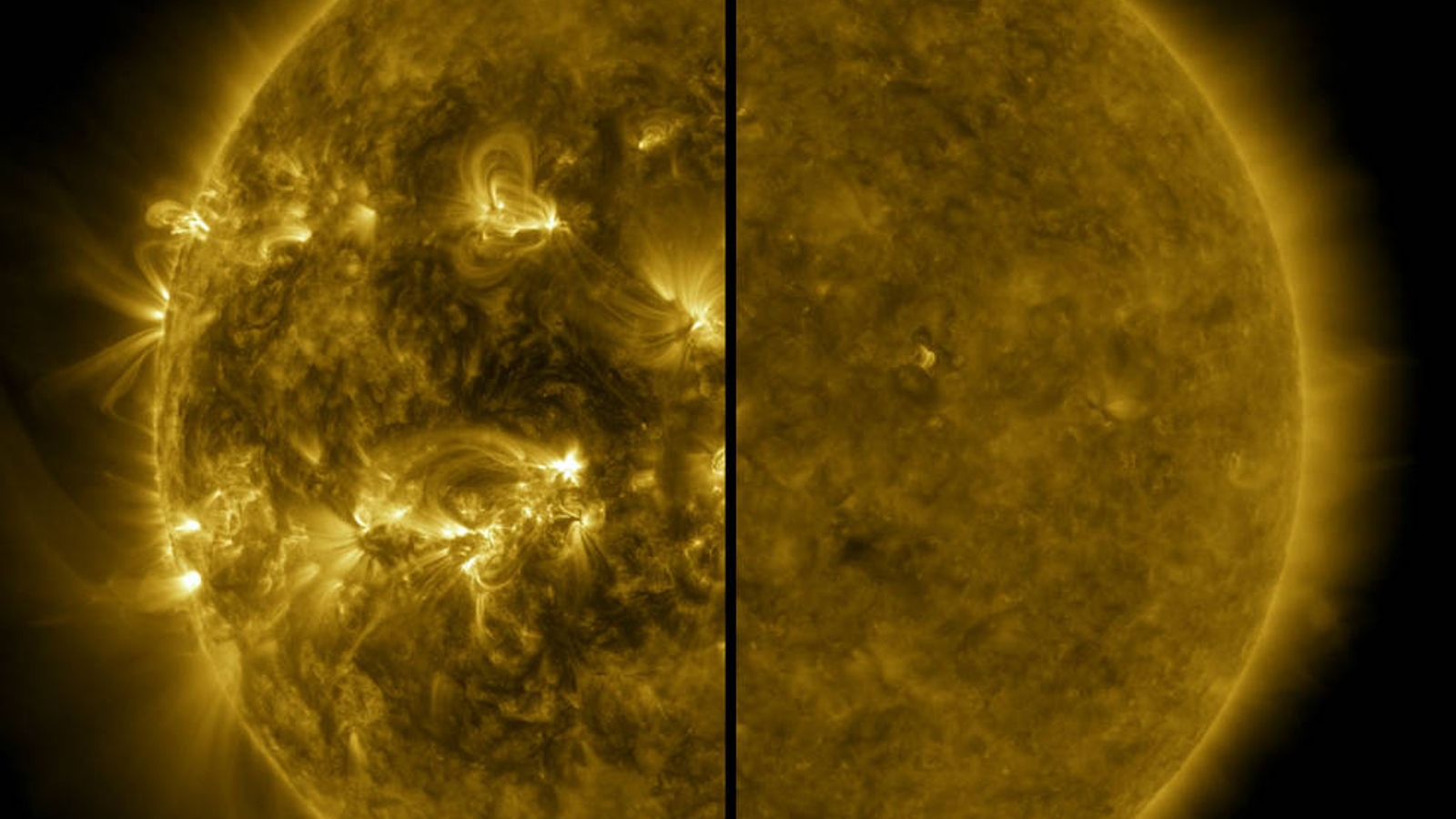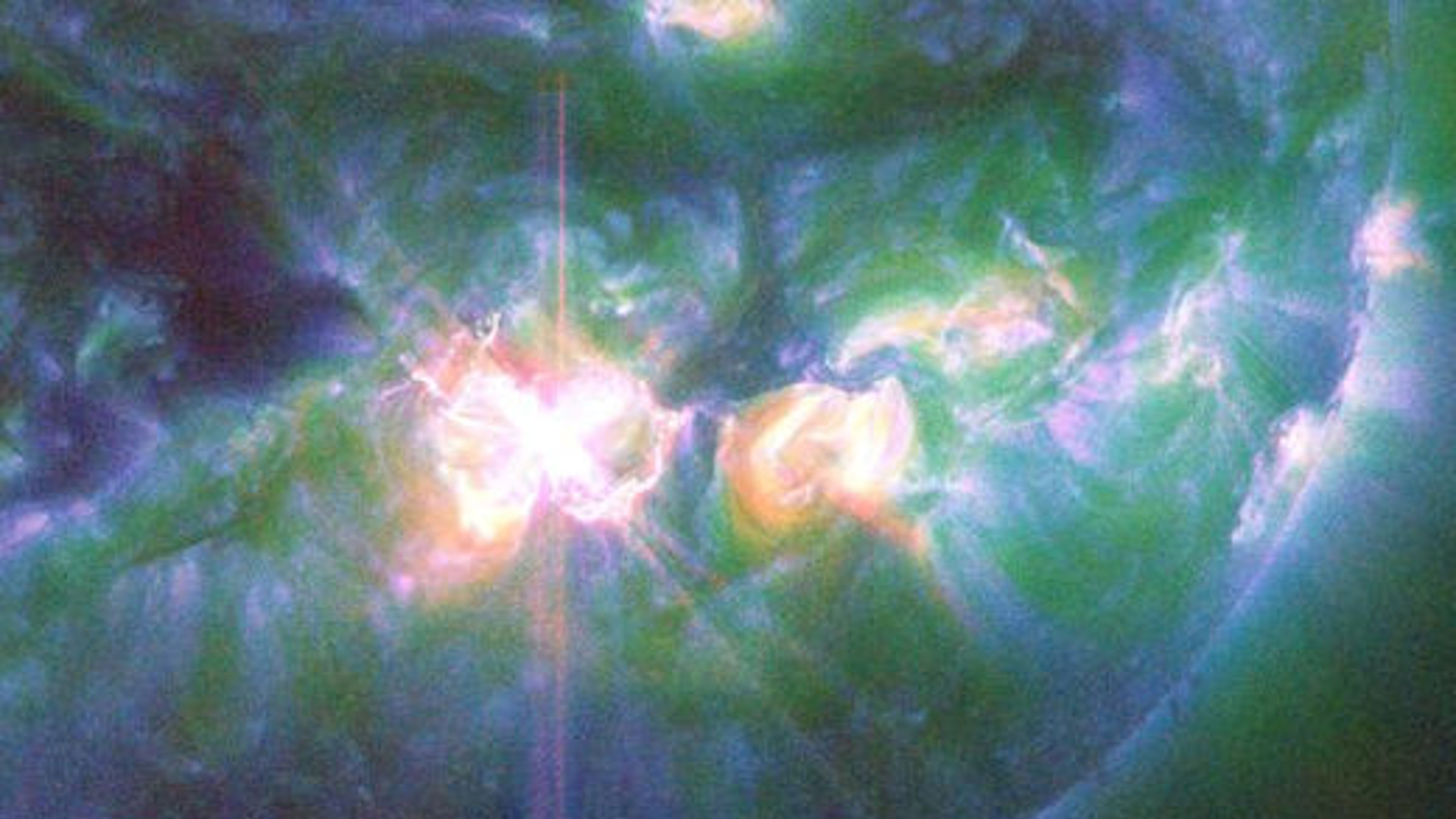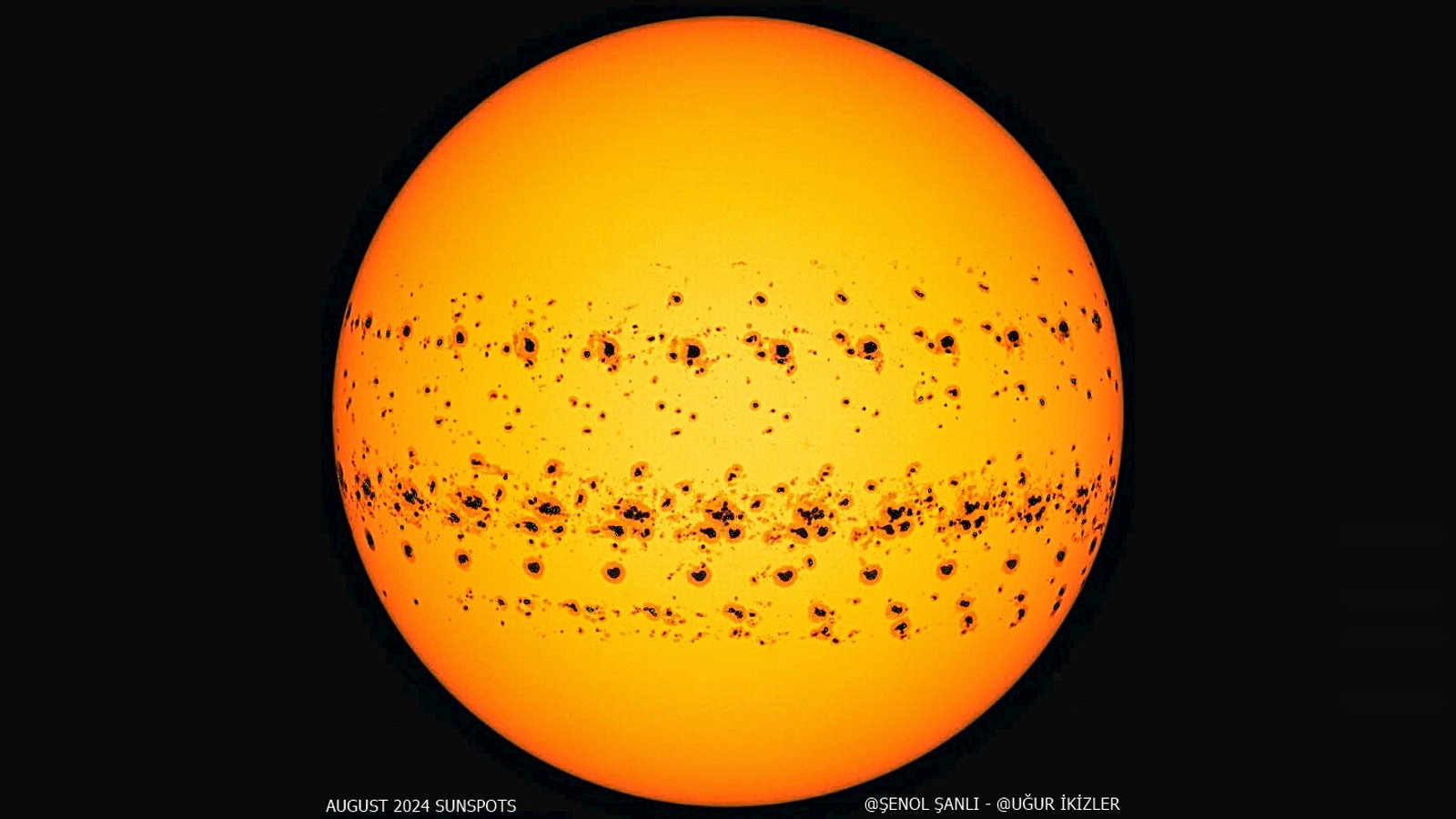
The explosive peak in the sun's roughly 11-year cycle of activity — known as the solar maximum — is already well underway, scientists have announced. While many experts suspected that this was the case, the official confirmation comes as a big surprise given that researchers normally hold off on making such announcements until after this active phase starts winding down.
Representatives from NASA, the National Oceanic and Atmospheric Administration (NOAA) and the international Solar Cycle Prediction Panel (SCPP) made the announcement on Tuesday (Oct. 15). The groups confirmed that the solar maximum has already begun and suggested that it may have started as early as two years ago, long before initial solar cycle forecasts had predicted. The scientists also noted that solar activity will likely remain high for around another year.
"This announcement doesn't mean that this is the peak of solar activity we'll see this solar cycle," Elsayed Talaat, director of space weather operations at NOAA, said during the announcement. Solar activity could still increase in the coming months, bringing more vibrant aurora displays and potentially damaging solar storms to Earth, he added.
Many scientists not involved with the SCPP already speculated that solar maximum had begun earlier this year. However, SCPP researchers normally wait until months after solar activity starts to ramp down to announce exactly when a solar maximum began. The unusually early announcement may have been prompted by a series of extreme space weather events over the last few weeks and months.
Related: 15 signs the sun is gearing up for its explosive peak — the solar maximum

In December 2019, when the current solar cycle (Solar Cycle 25) began, the SCPP predicted that solar maximum would likely start around 2025 and be relatively weak compared with past cycles, much like the previous maximum during Solar Cycle 24, which peaked between 2011 and 2014.
However, it soon became apparent that these initial predictions were inaccurate when signs of solar activity, such as sunspot numbers and the frequency of solar flares, began to sharply climb in late 2022 and early 2023.
In June 2023, Live Science was one of the first major media outlets to predict that the solar maximum would arrive earlier and be more active than initially expected. And in October last year, SCPP scientists released an unprecedented updated forecast predicting that the solar maximum could begin in early 2024.
Solar activity "has slightly exceeded expectations," Lisa Upton, co-chair of the SCPP, said during the most recent announcement. But the solar activity is not out of character for a typical solar maximum, she said.

However, 2024 has already demonstrated some potentially record-breaking levels of solar activity. For example, in August, the number of visible sunspots on the solar surface reached a 23-year high, including the highest daily count since 2001.
The number of X-class solar flares — the most powerful explosions the sun can produce — has also exceeded any other year on modern record (since 1996), according to SpaceWeatherLive.com. The most powerful of these solar outbursts was an X9 magnitude blast on Oct. 3, which was the most explosive flare since 2017.
Solar flares can launch clouds of plasma and radiation, known as coronal mass ejections (CMEs), at Earth. These can trigger geomagnetic storms, or disturbances in our planet's magnetic field, which can paint the skies with auroras.
In May, a barrage of CMEs triggered the most intense geomagnetic storm for 21 years, leading to one of the most widespread aurora displays in the last 500 years. Several other "severe" geomagnetic storms have also hit our planet this year, most recently between Oct. 10 and Oct. 11.
Time will tell if solar activity will reach even greater levels in the coming year. But there is a chance that even more powerful solar storms, on par with the 1859 Carrington Event, could strike our planet, potentially impacting ground-based infrastructure, triggering widespread radio blackouts and causing satellites to tumble back to Earth.







